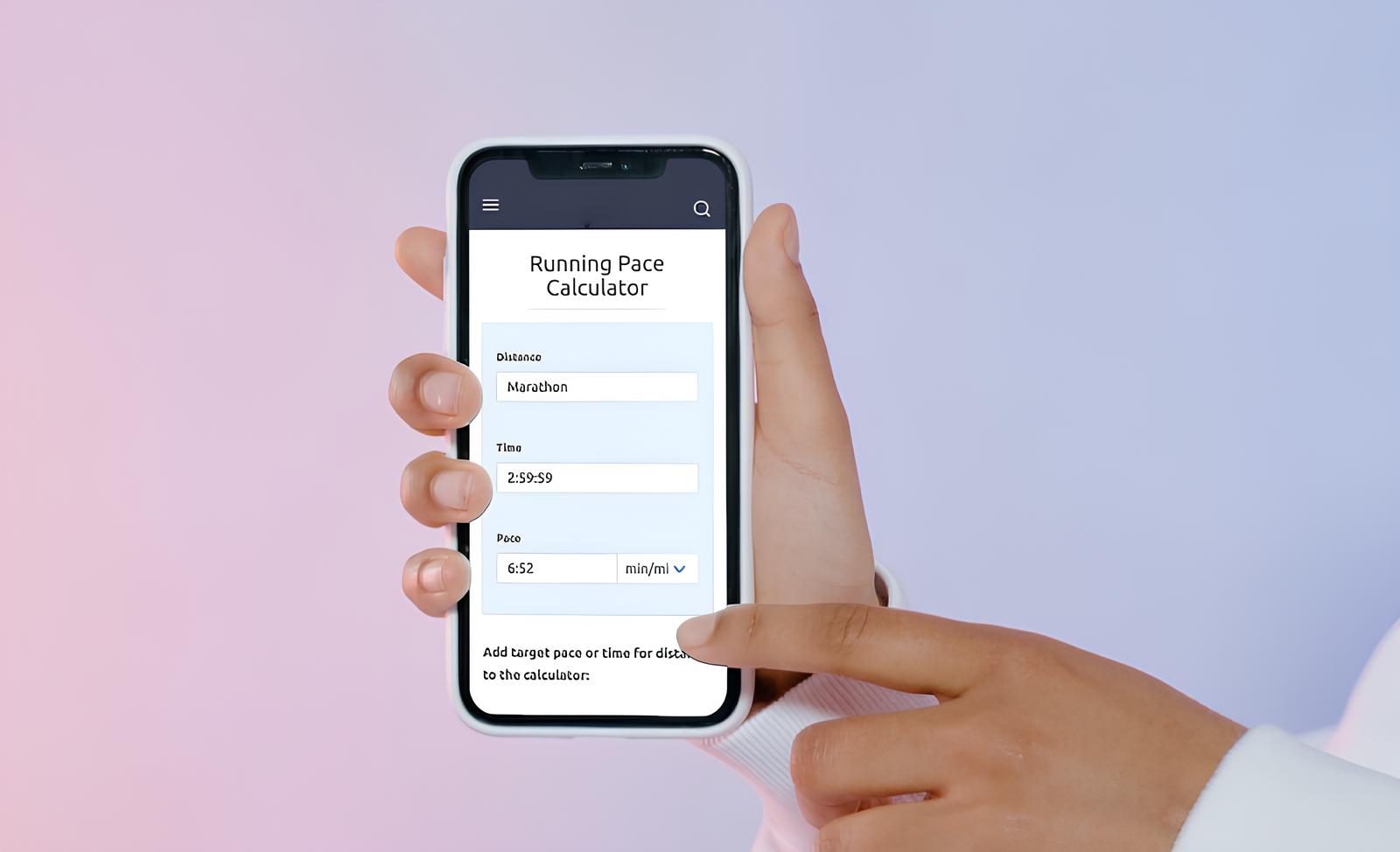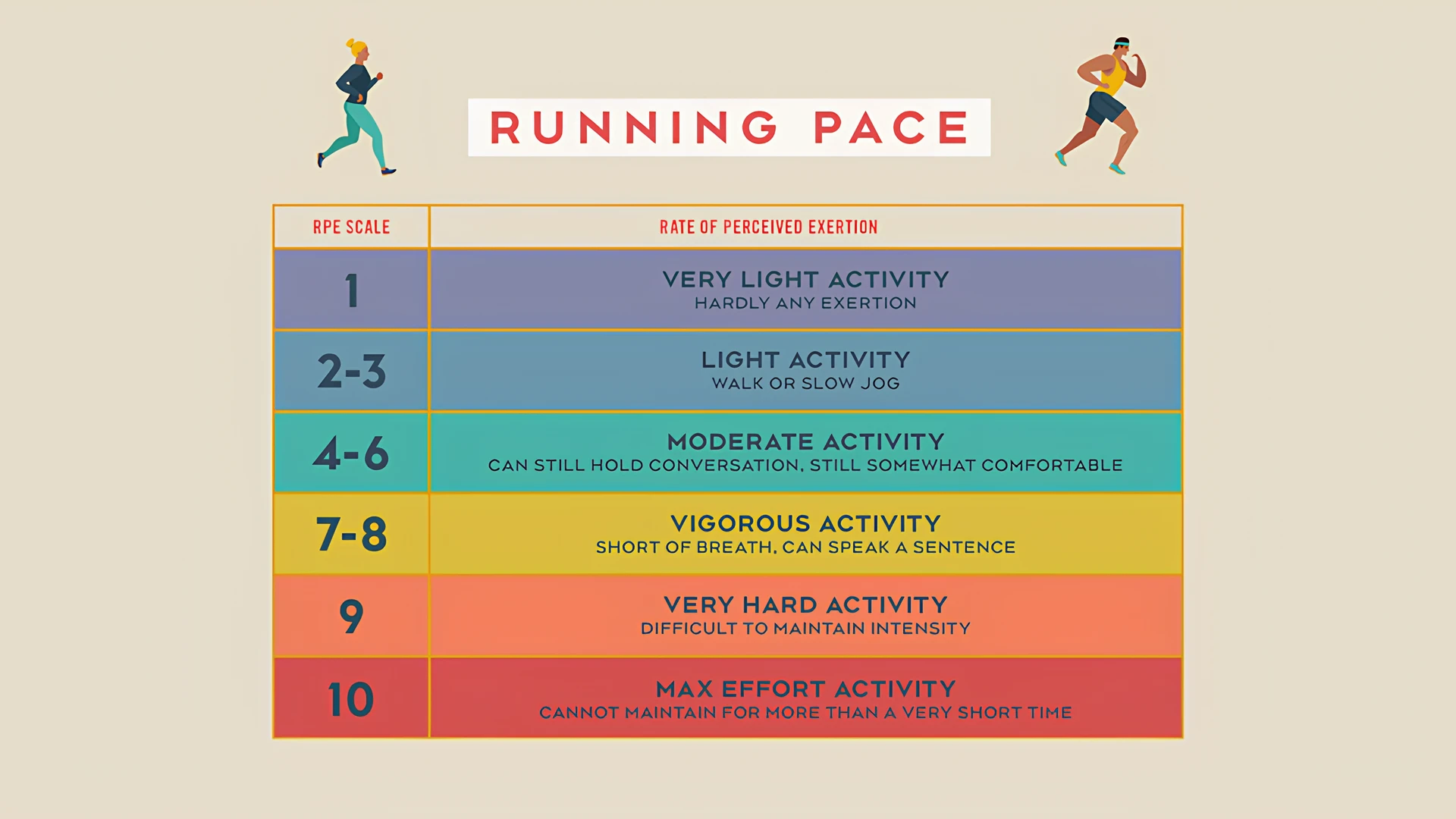Whether you are a new runner or want to join a training run, it is important to know your pace to assist in better running. Whether it’s 5K, 10K, or half marathon, our running pace calculator can help you know your running pace and monitor your progress. Not only can it be used to know your running pace, but it is also helpful in multiple ways, which you will find out below.
Running Pace Calculator
The running pace calculator has multiple applications, including jogging, cycling, skating, running, and any activity requiring distance coverage. Even when you are exercising, the pace calculator helps you track your pace throughout. Whether you are running through an entire route or completing it in the form of segments, you will find your running pace in the segments or throughout the route.
Analyzing pace through individual segments helps measure the performance during each segment, and by looking at the results, you may compare your pace and easily identify how much improvement is needed. The calculator provides the time required for race completion based on your pace and lets you understand even the smallest changes directly impacting your running pace. The unit conversion system in our running pace monitor spares you time from doing unit conversion manually and gives you instant results based on the distance covered in yard, meter, or kilometer. The runner can estimate how far he could run in a given amount of time based on the pace results.
How to Use a Running Pace Calculator?
The best part about this multipurpose calculator is that not only does it make estimating your running pace easier, but it also helps in calculating distance and time. All you need is to enter the two variables between time, distance, and pace and leave the rest of the calculative task on the calculator.
To calculate your running pace, you need to:
- Select ‘Calculate Pace’.
- Enter the time in which you have covered the distance.
- Enter the distance that you have covered in that time,
- Choose the system unit in which you want your pace results.
- Press ‘Calculate’.
Calculating Running Pace Manually
By dividing the time in which you have covered the distance by the distance that is covered, you can estimate the running pace.
For example;
If a person is covering a distance of 5 miles in 50 minutes, his pace would be:
Time / Distance = 50 minutes / 5 miles = 10 minutes/mile
What is Running Pace?
Running pace is basically the time it takes to cover a specified distance. The time you take to cover a mile or kilometer is described as your pace and is extremely important to determine while covering long distances. Whether you are a new runner or an expert, pace matters to everyone, as it is a significant factor in determining how well you may perform in a training run. Whether you are participating in a 5K, 10K, full marathon, or half marathon, you are always concerned about increasing your pace to finish the distance as soon as possible. Awareness of the running pace also helps lower the chances of injuries, improves your performance, and helps you achieve better run-time accuracy.
Is Pace and Speed the Same?
You probably have come to this blog post by considering pace and speed as the same. While most of us use speed and pace interchangeably, these terms are not similar. The speed indicates the number of kilometers covered in an hour, while pace determines the time it takes to cover a specified distance. We can simply get the idea by looking at the units of both these terms as:
- Speed = distance/time while distance is in kilometer and time is an hour
- Pace = time/distance while time is in seconds and distance is in kilometers
The concepts of pace and speed are not difficult to understand, but mixing them into each other is easy.
To help you better understand the running pace, we have designed a calculator that produces instant results and gives you a clear idea about your pace.
Relationship Between Pace, Speed, Time, and Distance
These entities are closely associated with each other and can be used to derive the value of any unknown entity among them. Their formula representation clearly shows their relationship, and each of these plays a significant role in improving the performance of an athlete
- Time = pace x distance
- Distance = time/pace
- pace = time/distance
- speed = distance/time
These formulas are easy to understand but can be intermingled due to their dependency on similar items.
How Can I Pick up the Running Pace?
Everyone wants to increase their running pace in competition and surpass their personal best performance, regardless of how experienced they are in the sport or whether they are just getting started. The basic fact is that the only way to raise your speed is to run faster actively; you won’t be able to improve your race timings by continuing to jog for extended periods of time at a modest pace. Consistency and dedication to improvement are the only factors that matter while looking to pick up the running pace.
A few helpful tips are to build strength and increase the running pace.
- First, you need to find out how high of a running pace you can adopt, and for that, start running faster and then return to your normal running pace. Running at a pace higher than usual feels discomfort initially, and if the muscles start paining, reduce your pace.
- Set your mileage goals with an everyday running routine. Start ticking the newly set goals by covering more distance every other day. You will see an improved running pace within a few days if you follow a running routine consistently.
- Adjusting your gait and body posture is important when improving your running pace. A better body posture allows you to put less pressure while moving your body and saves more energy for an increased running pace.
- Running Hills has worked with several people in improving their running pace as it enhances running efficiency and helps you cover increased mileage in less time. Once you have established physical endurance, add running hills into your running routine and see how effectively it helps pick up an improved running pace.
- Provide your body with ample rest hours as it is crucial for your body to take rest to prevent body or muscle injuries. It becomes easier to adapt to a high running pace if you allow your body to rest at least one day each week.
- Don’t forget to add more protein and complex carbohydrates sources into your diet. A good nutrient supply is important to cope with the fast-paced requirements and helps you carry out complex workouts easily.
Bottom Line
A running pace calculator can be useful if you’re new to racing or hoping to improve your running performance. You can use this calculator to assess how quickly you should run to meet your target goals. Calculators for running pace do not consider changes in pace due to injury, fatigue, the running path, etc. You may see how someone with your paces will perform over any given distance using our free running pace calculator, but certain unexpected and unspecified conditions are an exception, so the calculations may not be accurate under these.
Frequently Asked Questions (FAQs)
What is the best time to complete a 5K run?
The best time to finish a 5K run is mostly 30 minutes for men and 35 minutes for women. However, this time estimation might differ depending on age, running, and fitness level.
Why is it important to track pace when running?
By tracking your pace, you may easily analyze how long it will take to complete a run. It also helps ensure that your energy reserves are not left out when running for a specific time duration.
What is the formula representation of calculating running pace?
Pace = Time/Distance
This short formula helps in calculating your running pace and tracking your performance. You may compare your running pace with your precious results and analyze how much improvement is required.
What are popular strength training exercises which also help in increasing running pace?
Press-ups, burpees, lunges, jumping squats, and plyometric box jumps are popular strength training exercises that also help in picking up the pace.

A fervent champion for holistic well-being, graces this community with her expertise in health and fitness. With a solid educational foundation in physical fitness and a commitment to empowering others, Sara distills her extensive knowledge and experience into actionable insights. Her writing, firmly grounded in evidence-based practices, aims to demystify health complexities and inspire readers to cultivate sustainable habits for a balanced life. As a certified fitness trainer, Sara offers a well-rounded perspective on wellness. Join Sara on this transformative journey towards a happier, healthier, and more vibrant you.









Loading…